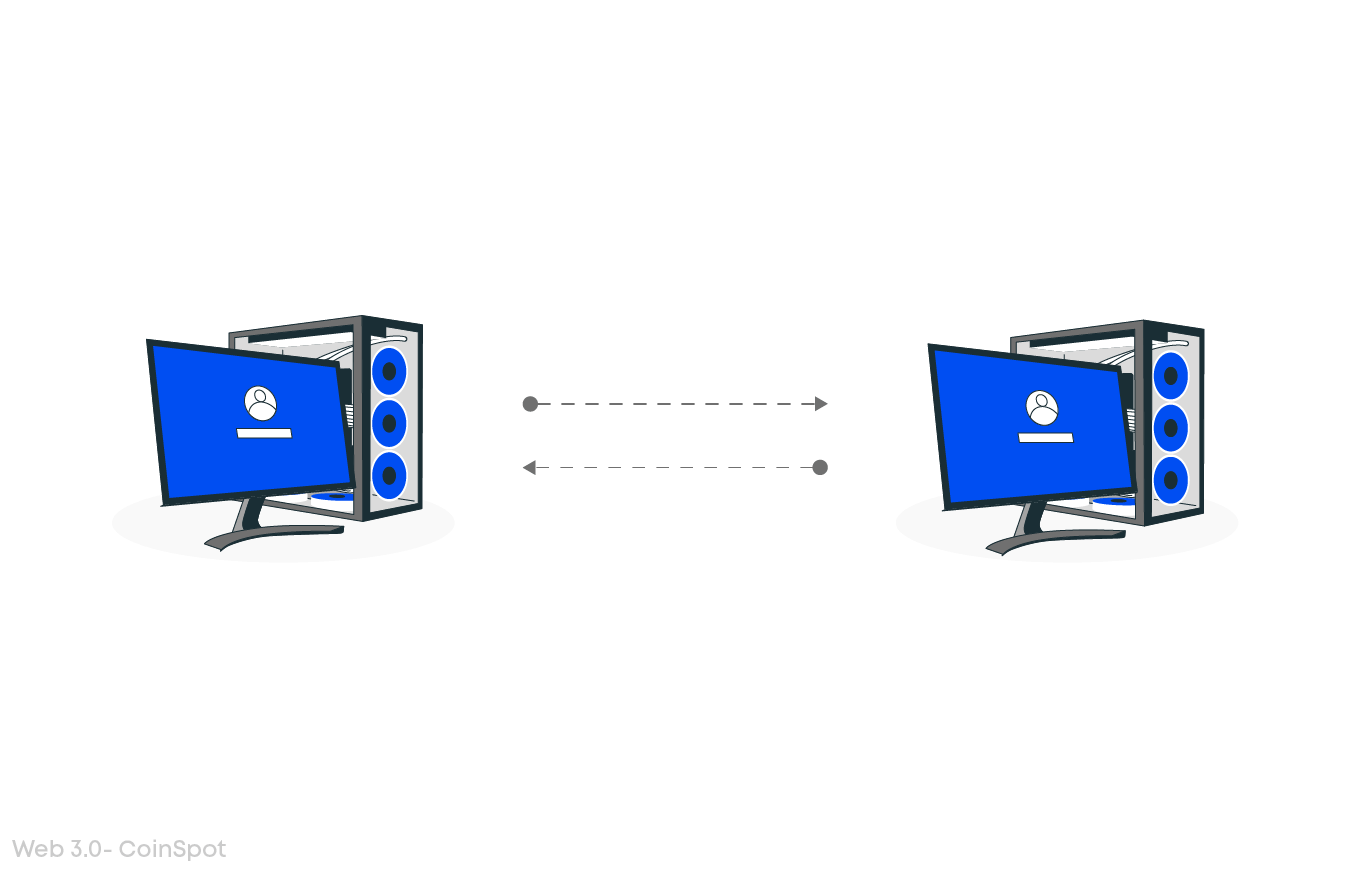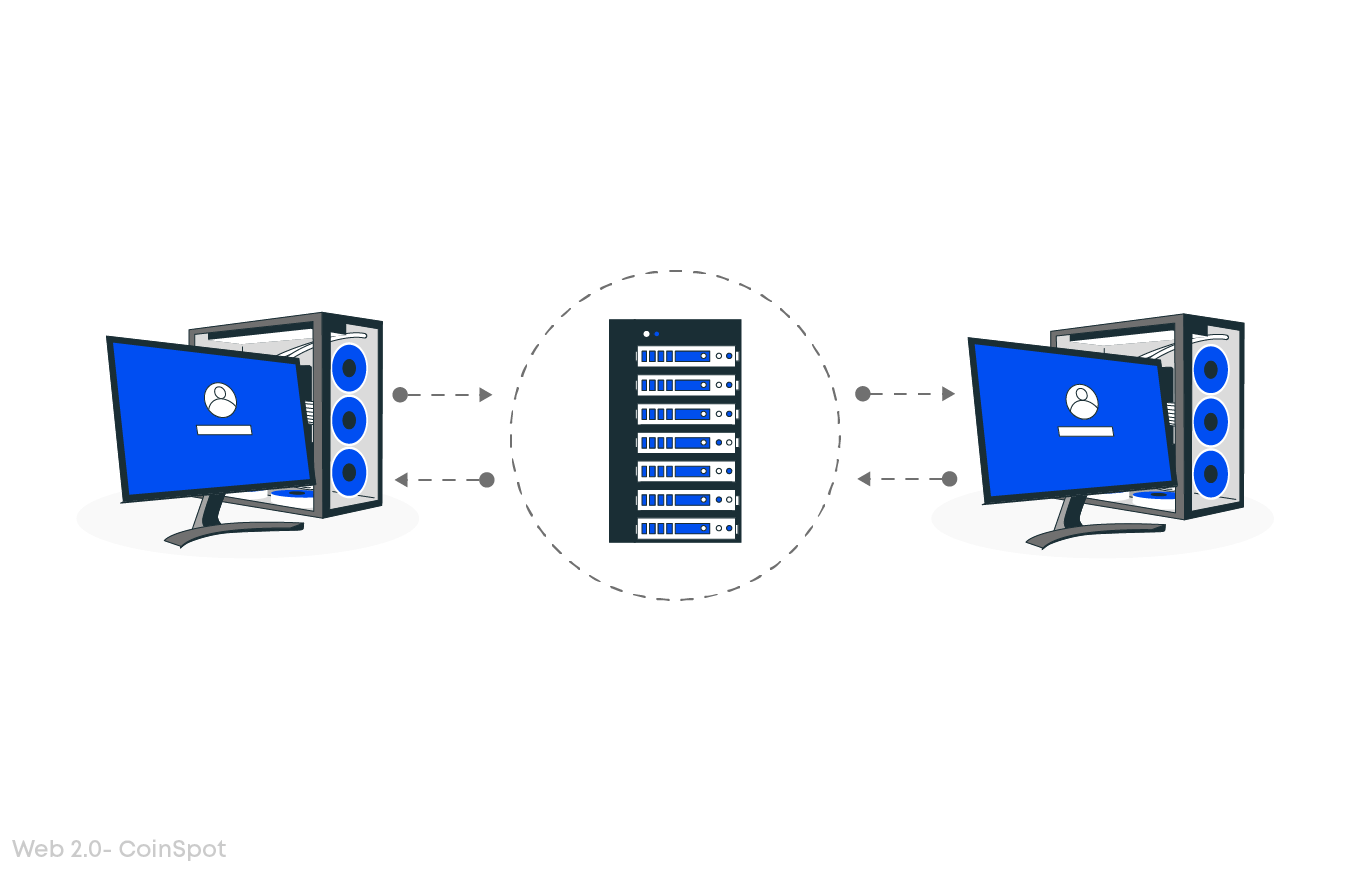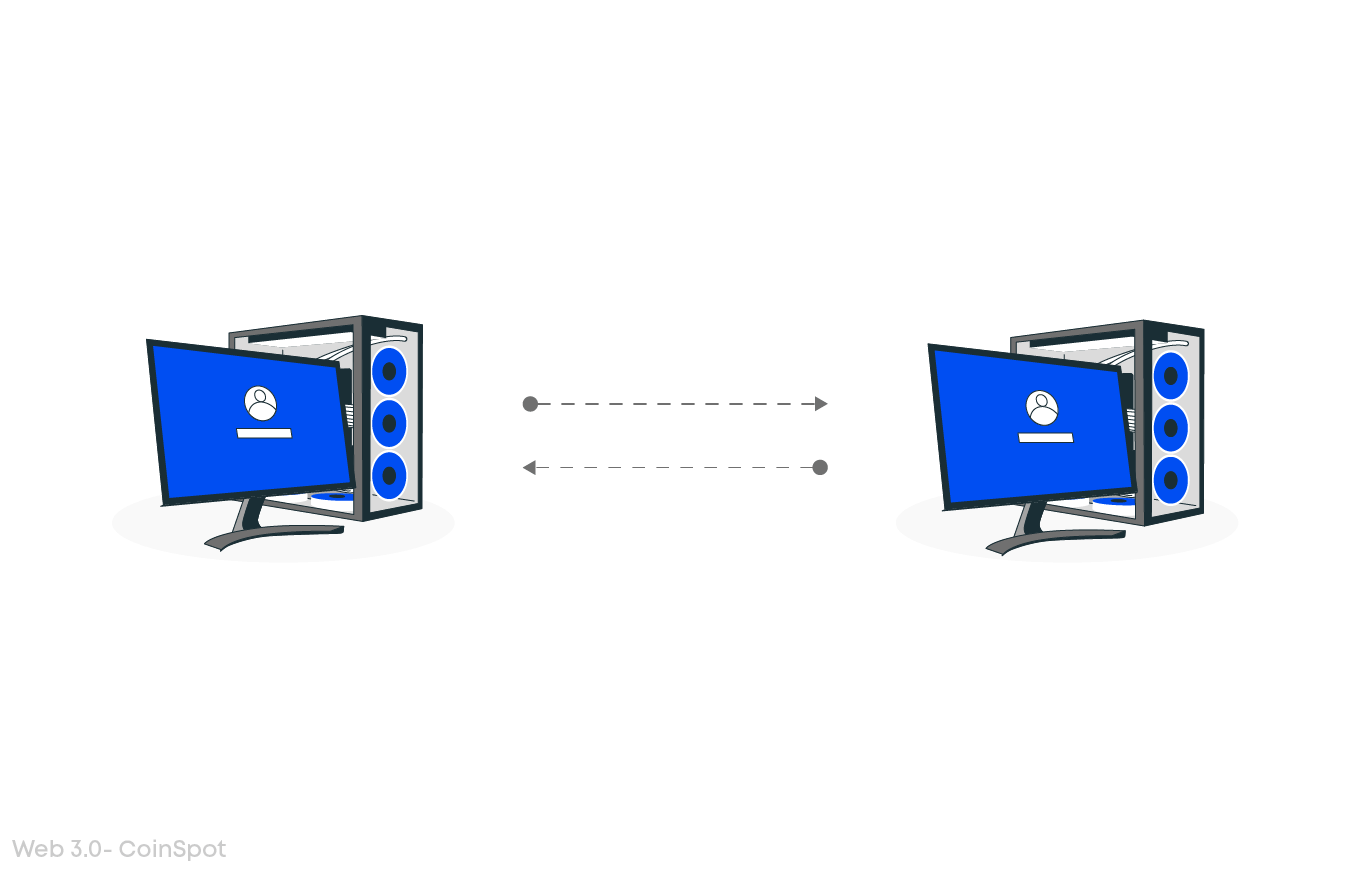Web3 Tutorial: The fundamentals of Web3
 10 minutes
10 minutes

 10 minutes
10 minutes

As the Internet has expanded rapidly, it has become intricately intertwined with daily human life. To harness the vast amounts of data and information available online, the Web architecture has continuously been reinvented and upgraded. From the static informational nature of Web 1.0 to the dynamic interactive capabilities of Web 2.0, scholars and engineers have strived to create a more open, inclusive, and equitable online world. Undoubtedly, the next phase of web evolution, known as Web 3.0, is already underway and influencing our daily lives.
In 1989, at CERN, Geneva, Tim Berners-Lee pioneered the development of the protocols that would become the World Wide Web (www). His vision was to establish open and decentralised protocols facilitating global information exchange.
The first inception of Berners-Lee's creation occurred roughly between 1990 to 2004. Web 1.0 was mainly static websites predominantly owned by corporations, with minimal user interaction and content creation, earning it the moniker of the read-only web.

The era of Web 2.0 began in 2004 with the rise of social media platforms, marking a shift from a passive consumption model to an interactive one. In this new paradigm, companies not only provided content but also facilitated user-generated content sharing and interaction. As internet usage surged, a small number of dominant corporations came to wield significant control over online traffic and value. Additionally, the Web 2.0 era introduced the advertising-centric revenue model, wherein users could create content without ownership or financial benefit from its monetization.
Later, the emergence of social media platforms including Facebook, Twitter and Instagram took content sharing to new heights. YouTube, Wikipedia, and Google, along with the ability to comment on content, expanded our ability to watch, learn, search, and communicate.

The concept of 'Web 3.0' was introduced by Gavin Wood, one of the co-founders of Ethereum, shortly after the platform's launch in 2014. Wood articulated a solution to a concern shared by many early cryptocurrency adopters: the excessive reliance on trust within the existing web infrastructure. He highlighted that much of the current web ecosystem depends heavily on placing trust in a select few private companies to prioritise the public's interests.

Web3 is an extension of cryptocurrency, deploying blockchain to give power back to the users in the form of ownership. Web3 will be read-write-own.
It’s noteworthy that Web 3.0 is still being developed, so there isn’t a generally accepted definition of this significant evolution of the World Wide Web.
However, the origins of what would become Web3 can be traced back to 1991, when scientists W. Scott Stornetta and Stuart Haber initiated the first blockchain project aimed at timestamping digital documents. However, it wasn't until 2009, following the financial crisis, that the concept gained significant traction with the launch of Bitcoin.
Bitcoin, along with its foundational blockchain technology, operates by tracking cryptocurrency ownership on a publicly shared ledger. Transactions are processed by "miners" who solve intricate mathematical problems, thereby adding new data blocks to the chain and earning bitcoin as a reward. While Bitcoin primarily serves as a digital currency, subsequent blockchains have expanded the possibilities.
Ethereum, introduced in 2015, functions not only as a cryptocurrency but also as a platform for building various cryptocurrencies and blockchain projects. Co-founder Gavin Wood likened Ethereum to "one computer for the entire planet," with computing power decentralised globally and devoid of centralised control. With over a decade of development, advocates of blockchain-based internet are heralding the arrival of a new era known as Web3.
Now, as described, a blockchain can store the number of tokens in a wallet, the terms of a self-executing contract, or the code for a decentralised app (dApp). Not all blockchains work the same way, but in general, coins are used as incentives for miners to process transactions. If you hold enough of these coins, you have a say over the network. That is what contributes to the ‘own’ quality of Web3.
It’s challenging to give a rigid definition of what Web3 is, though, a few core principles underpin its creation.
Inherently, the features of Web3 are not isolated and do not fit into neat categories. In this article, however, we try to separate them to make the explanation plausible for all audiences.
In Web3, you gain unprecedented ownership of your digital assets. Now imagine you are playing a Web2 game. If you purchase in-game items, they are tied to your account and can be lost if your account is deleted or if you stop playing. Conversely, Web3 enables direct ownership through non-fungible tokens (NFTs). No entity, including game creators, has the authority to take away your ownership. Additionally, if you decide to stop playing, you can sell or trade your in-game items on open markets and retain their value.
Web2 platforms often wield disproportionate power over content creators, as seen in the case of OnlyFans. In August 2021, OnlyFans attempted to ban sexually explicit content. Though the decision got quickly reversed after the backlash, it shows that this imbalance prompts creators to risk losing their reputation and following if they leave a platform. However, in Web3, data resides on the blockchain, allowing users to retain their reputation when they move to platforms aligning more closely with their values. Unlike Web2, Web3 platforms inherently resist censorship.
Web3 introduces the concept of owning platforms collectively through tokens akin to shares in a company. A decentralised Autonomous Organization (DAO) represents a community-driven entity that collectively manages a blockchain project. Unlike traditional top-down governance models, where a select few make key decisions, DAOs enable holders of a project's governance token to propose, review, and vote on initiatives impacting the project's development and direction.
Participating in a DAO fosters a sense of ownership among community members, ensuring decisions align with the project's best interests. Here are some notable examples of DAOs in the Web3 space:
Engaging with these DAOs not only provides opportunities for community involvement but also empowers individuals to contribute to the growth and governance of decentralised projects in the Web3 ecosystem.
In traditional Web2 usage, individuals manage separate accounts across various platforms, necessitating changes to display names and profile pictures on each platform individually. Furthermore, reliance on social sign-ins poses censorship risks, as platforms can restrict access to entire online identities with a single click. Conversely, Web3 empowers users to control their digital identity through Ethereum addresses and Ethereum Name Service (ENS) profiles, offering secure, censorship-resistant, and anonymous single-login solutions across platforms.
Unlike Web2, which relies on conventional banking infrastructure, Web3 leverages tokens such as ETH for direct browser-based payments, eliminating the need for trusted third parties. This approach ensures inclusivity, as it enables individuals without bank accounts or residing in restrictive jurisdictions to participate in online transactions seamlessly.
Web3 facilitates the emergence of cooperative governance models for products previously centralised. Virtually anything can be tokenized, from memes and artworks to an individual's social media content or tickets to events like Gary Vee's conferences.
An illustrative case of this paradigm shift is observed in the gaming sector. Gamers often voice dissatisfaction over bugs or changes in their favourite games. However, with Web3, gamers gain the ability to invest in games and participate in decision-making processes. Major Web2 corporations like Meta and Ubisoft are venturing into the creation of virtual realms incorporating Web3 principles. Non-fungible tokens (NFTs) are poised to significantly alter the gaming landscape, enabling players to assert immutable ownership over in-game items they acquire.
Cryptocurrencies are a key component of the Web3 ecosystem.
As previously mentioned, one of the core ideas of Web3 is that it has native payments: it uses cryptocurrency for spending and sending money online instead of relying on traditional banks and payment infrastructure.
In Web3, the concept of asset ownership holds paramount importance, with cryptocurrencies serving not only as a means of transaction but also enabling a "token economy." This framework allows users to earn cryptocurrencies by contributing to a platform, potentially promoting a fairer internet ecosystem. Cryptocurrencies play a pivotal role in providing the financial infrastructure and incentive structures essential for the functioning of Web3.
Moreover, cryptocurrencies offer a direct and trustless mode of payments and exchanges, circumventing the need for third-party control, which Web3 aims to eradicate.
Non-fungible tokens are unique digital assets that are stored on a blockchain. Unlike crypto, every NFT has a distinct value and contains specific information that makes it unique.
Non-Fungible Tokens (NFTs) are another key component of Web3. NFTs facilitate the ownership and exchange of digital commodities, spanning realms like digital art, music, and virtual real estate. They offer a means to establish ownership and verify the authenticity of digital content, which was not possible in the Web2 framework. Moreover, NFTs can operate on a smaller scale than coins because they create their own ecosystems and require nothing more than a community of people who find value in the project. For example, baseball cards are valuable only to certain collectors, but that group really believes in their value.
Through the tokenization of creative works, NFTs are perceived as democratising the digital economy, potentially redistributing economic influence to creators and users, in alignment with Web3 principles. Additionally, NFTs empower gamers to own in-game items such as attire, weapons, and other enhancements, enabling direct peer-to-peer trading without intermediaries.
The term "meta" signifies beginning, importance, and consummation. The Metaverse blends virtual and tangible realms, with Web 3.0 infrastructure offering foundational support for Metaverse applications. Utilising immersive interactive technologies such as VR, AR, and MR can enhance the appeal of digital environments for users. The emergence of the Metaverse is poised to revolutionise several sectors:
1) Education and training: Virtual educational platforms empower educators to effectively instruct students, while immersive learning environments facilitate deeper comprehension of subjects.
2) Entertainment: The entertainment sector, particularly gaming, movie-watching, and musical experiences within the Metaverse, is currently witnessing notable success. Digital reality transcends limitations of physical space and time, while recreational activities can aid in expanding individuals' interests.
3) Security and privacy: The role of Web 3.0 architecture in safeguarding data is undeniable, granting users control over their usage data. decentralised identity systems effectively mitigate identity theft and various cybercrimes.
In summary, the Metaverse stands to disrupt smart cities, social interactions, and economic landscapes within the realm of Web 3.0.
Web 3.0 is not a panacea for all the problems of Web 2.0. In fact, it may have some potential drawbacks that enterprise leaders need to know about. They include the following:
Preparing for Web 3.0 involves several key steps to familiarise oneself with its core technologies and associated tools. Here's a comprehensive approach:
By actively engaging with these steps and embracing the collaborative nature of Web 3.0 development, individuals can position themselves to thrive in the evolving digital landscape and contribute to the realisation of a more decentralised and inclusive internet.
Indeed, the vision of Web3 as a dominant force on the internet remains distant. While self-proclaimed champions of Web3 aspire to shift the internet from corporate ownership to user control through blockchain technology, the reality is much more complicated. However, it is important to acknowledge that the technology now exists to potentially restructure the internet in a manner that prioritises user benefits over corporate interests. Despite the challenges and limitations, the potential for Web3 to empower users and reshape the internet landscape is a promising prospect.
While the Semantic Web forms a crucial component of Web 3.0 by facilitating AI comprehension of web content and user instructions, the latter also relies on additional technological foundations, notably blockchain.
The metaverse represents an enriched user experience incorporating 3D augmented and virtual reality, transforming the internet into a unified virtual domain for activities surpassing physical world limitations. Blockchain, integral to Web 3.0, is indispensable for decentralising and securing digital assets within the metaverse. While Web 3.0 could conceivably exist prior to the metaverse, the converse is improbable, as creating a singular virtual world necessitates the restructuring or replacement of current web infrastructure by Web 3.0.
Blockchains serve as the foundational framework for Web 3.0's decentralised data structure. Various blockchain-based technologies like cryptocurrencies, dApps, NFTs, and smart contracts are anticipated to play pivotal roles in enhancing the distributed and personalised nature of Web 3.0.
Web 3.0's conception and technical components do not owe to any single individual or entity. If attributed to someone, Tim Berners-Lee, the creator of the World Wide Web and a vocal advocate for the Semantic Web, might be recognized. However, credit is also due to the innovators behind blockchain and its associated technologies, as well as the organisations driving their commercialization, as they collectively contribute to the realisation of Web 3.0.
Contrary to assertions by blockchain enthusiasts, notable blockchains and cryptocurrencies have experienced intermittent security breaches. Hence, it is plausible that Web 3.0, when fully established, may face vulnerabilities, given blockchain's pivotal role in its architecture.
Web 3.0 coins essentially encompass the existing cryptocurrencies that underpin Web 3.0, such as Bitcoin and Dogecoin, which are already in circulation.
A conventional initial approach involves investing in established cryptocurrencies. While few specialised Web 3.0 technology vendors are publicly traded, certain exchange-traded funds (ETFs) amalgamate stocks of Web 3.0 companies, providing investment avenues. Additionally, ETFs and mutual funds bundling cryptocurrencies are available. While established companies like Google and Meta currently allocate a fraction of their operations to Web 3.0 endeavours, this landscape may evolve soon, warranting consideration for direct investments.
